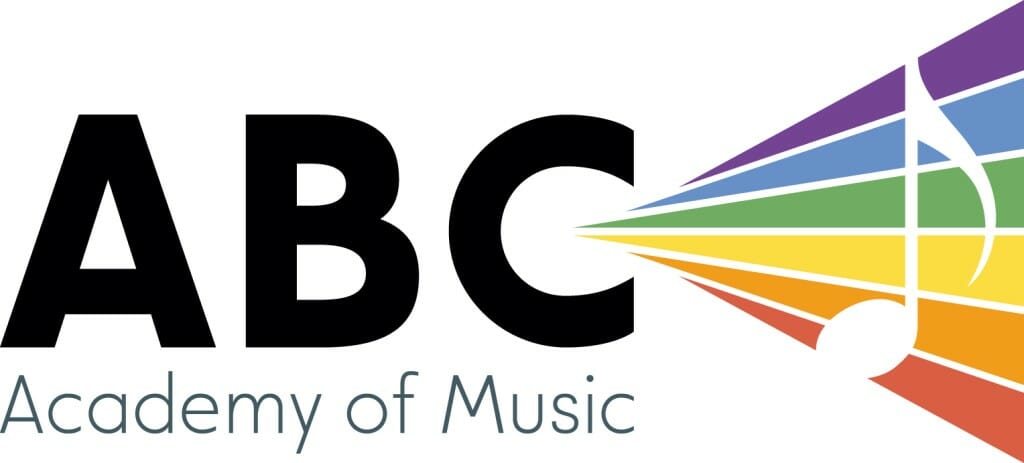Christopher Hull is a percussionist and ethnomusicologist whose work focuses on tensions between tradition and innovation in contemporary music. As a passionate performer of solo, chamber, and orchestral percussion, he seeks to ground his work in his classical training while simultaneously transcending the conventions of the conservatory. With classical percussion degrees from Wilfrid Laurier University and University of Alaska Fairbanks, a performing arts certificate from the Arts Institute of Indonesia Denpasar, and his current studies in ethnomusicology at the University of Toronto, Christopher’s genre-defying work exhibits a world of experience.
As an orchestral percussionist, he frequently works with the National Academy Orchestra of Canada, the Hamilton and Thunder Bay Symphony Orchestras, and Sinfonia Ancaster. He has appeared as a chamber musician and soloist in festivals such as Open Ears, International Gamelan Festival Munich, Young Artists Niagara, and Sacred Rhythm Jakarta, and can be heard playing drums, vibraphone, and synthesizer on commercial recordings by Call Me Moon and Treephones. He is also Associate Artistic Director of Toronto-based Evergreen Club Contemporary Gamelan, commissioning and premiering new works for Sundanese degung, and director of the University of Toronto’s Balinese gamelan ensemble, Dharma Santi.
Get to know Chris…Beyond the Bio!
Hobbies: Reading, cycling, and synthesizers
Musical influences: Jojo Mayer, Benny Greb, David Garibaldi, Gary Burton, Tony Miceli, Steve Reich, Glenn Gould, Bill Evans, I Dewa Made
Favourite food: Noodles
Least favourite food: Quiche
Favourite music: R&B, hip-hop, funk; Western modernism and minimalism; Balinese gender wayang; Sundanese degung; Orchestral; beatsce Favourite song:!
Favourite movie: The Departed
Favouirite movie music: Old modern romantic soundtracks (eg. Spellbound)
Favourite musical theatre/opera: West Side Story/Turandot
Best quote from your teacher: “When we perform, we smile. If we make a mistake while performing, we smile bigger.” -Dewa Suparta
Favourite quote: “I’m a man who leaves nothing to chance.” -Maestro Boris Brott
Favourite book: Dance, Dance, Dance by Haruki Murakami
Best thing about teaching at ABC: The lovely students
Latest Homework from CHRIS
Is Chris Your Teacher?
Sign up now to get your weekly assignments delivered, and never lose your homework sheet again!
Tuesday, February 4th
Lila
Warmups:
–8 on a Hand
–Single strokes
–Double strokes
–Paradiddles
Review of grip: good. Keep skin contact with stick
Basic Beat Level 3** same as level 2, but BD plays all four beats (1, 2, 3, 4)
Step 1) Count “1 + 2 + 3 + 4 + ”
Step 2) Play the Hihat with your Right Hand (RH) on all the counts
Step 3) Add in the Bass Drum with your Right Foot (RF) on “1”, “2”, “3”, and “4”
Step 4) Add in the Snare Drum with your Left Hand (LH) on “2” and “4”
Visual Drumset Method: exercises 5-7**
–You can find this in the google drive>Frequently Used Resources (please bookmark for future use)
–Aim for four repetitions of each exercise without hiccups or hesitations
Fruit Salad Game
-Create three of your own fruit salads using the four fruit-rhythms (in your notebook)
Josh
Warm-ups:
–Hand and foot coordination (see handout): playing steady beats on the bass drum, play singles, doubles, and paradiddles with your hands on the snare drum. There should be two snare notes (ti-ti; eighth notes) to every bass drum note (ta; quarter notes)
Groove Essentials Rock Groove 5
–Play the VD ex. 10 beat for this one!
–Let’s work on getting some fills together for it
White Stripes: Seven Nation Army: DONE!
Myles
20250204
Drumset Musician p81 ex. 9-12
–Polish these off this week
Weezer: My Name is Jonas
–Finishing page one beats
Drumset Musician p83 Twelve Bar Blues playalong
–We used this as a way to learn drum fills
–Next week let’s learn about the 12 bar blues as a form
==Xylophone==
Warmups (***F Major):
–Scale, one octave, ascending and descending, saying the note names as you play them (F-G-A-Bb-C-D-E-f)
–Arpeggio (F-A-C-f-C-A-F)
–Broken thirds (F-A G-Bb A-C…), ascending and descending
Cirone Book: “Step Six” ex. 5-8
Eartraining: identifying thirds and fifths
Francisco
Warmups:
–Stick Control first page ex. 14-18 (4x each, 120bpm goal tempo)
–Play eighths ca. 120-160 bpm (gradually building up the speed) using accents on the beats to help with the push-pull strokes
Tommy Igoe Groove Essentials book: Groove 1 FAST
–This week, we’re trying to get used to playing these grooves up to speed
–In your practicing, add in crashes on the “push” shots
Noah
Warmups (1min each per practice session):
–Paradiddle combo exercise with bass drum on quarter notes
Paul Simon: Late in the Evening
–Use a metronome (I use the Tempo app by Frozen Ape) to help you lock the sixteenth-note
Mozambique pattern into the grid
–the fill before Verse 1: needs to lock in. But, because of all the space, it’s hard to do. So, make sure to drill it slowly, counting along.
–Make sure the beat three BD-LH line up perfectly
Aviva
Warmups (1min ea)
–Single strokes (LRLR…)
–Double Strokes (LLRR…)
–Paradiddles (LRLL RLRR…)
Drumset Musician p11, ex. 1-7 a)
–Find the PDF for these in the “Frequently Used Resources” folder linked below
–This week, keep polishing these off. Practice playing them along with the play-along track below
Igoe Groove Essentials Groove 1 Slow (backing track and chart in Frequently Used Resources folder)
–Learn basic beat (at top of page) and play along with the backing track
–Add in the drum fills we learned (on the handout) at the end of four-bar phrases
–Once comfortable, begin learning Variation A. Careful to count the sixteenth notes as “1e+a 2e+a…”. So this beat will be counted something like “1 + 2 +a 3 + 4 +”
Bookmark the following google drive links:
—Your personal folder
—The “Frequently Used Resources” folder
Saturday, April 26
Tova
Xylo week: Cupid by 50/50 is now fully transcribed for you. Try to find all the notes at home and give your best try to learn the rhythm. When in doubt, try to count out loud in 8th notes (1 n 2 n 3 n 4 n), listening to the recording for answer is our last resort!
Rolls: I would like you to turn on metronome at around 80-90bpm, and play on 1 pitch (middle C for example) then play 1. 16th notes (4 notes a beat), 2. quintuplet (5 notes a beat, alternate between R and L on main beat, RLRLR LRLRL), if feeling capable, sextuplet (6 notes) The idea is to have control over when we are landing our roll and consistency in strokes (both in terms of timing and sound quality) avoid unevenness (e.g. LH softer than RH)
Jared
Bring me to life by Evanescence
we familiar ourselves up to bar 33. Great job dissecting such a complex groove. Work up to speed at home. We will try to play with recording for the section and read on next class. Also still try to spend some time planning the solo. A good solo doesn’t just come out of nowhere, but hard work!
Mario
Warm Up:
Triplet and double was superb today! Definitely seeing immense improvements with the relaxation aspect. We will keep using this as our warm up into the session
Drag: find a sweet spot between the clear three note (LL R) and the “french” way (buzz left R)
play around with both at home. for LL, use the same principle of practising doubles. Aim to do it in one movement instead of two taps. Explore how to recycle the bounce.
My Friend by RHCP
WE have familiarise ourselves with the tough spots in Page 1 and we are absolutely ready to play through some stuff next week. In the meantime, keep practising those transitions in chunks. Small chunks into large, then into phrases!
Start learning second page as we have today!
Do it slow!
Jonah
Material from Hannaford (snare drum and mallet or accessories) – The Simpson:
We explore where can we make good sounds on the xylophone, and the idea of playing on the edge of accidentals (sharp and flats), the tip of the edge has a more open sound than somewhere closer to the nodal point. Avoid nodal point at all cost.
Very tricky passages, but you quickly mastered how to play them. However always remember that to practise efficiently means doing it systematically and always strive to get repetition of the right notes.
Few things to remember are:
- position your right hand mallet below your left on the key so you don’t trip yourself going up the keyboard
- always observe the key signature and sharp flats
- when in doubt, block them in two, play it slow and slowly build up the muscle memory to play the passages
- for the repeating note passage, practise playing it with only RH then introduce LH after (with the idea of RH leading LH)
Preferred Books for TCHRNAME Students
Click to buy them here, and they’ll come right to your house! What could be easier?
BOOK TITLE
COMING SOON
BOOK TITLE
COMING SOON
BOOK TITLE
COMING SOON
BOOK TITLE
COMING SOON




